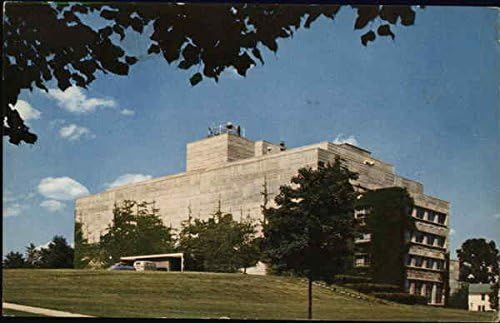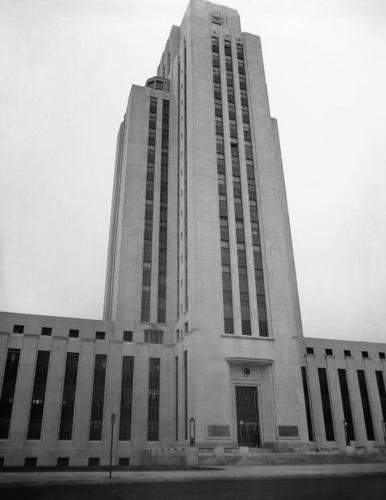The treasure trove of documents that Malcolm Blunt refers this writer to is almost never ending.
A few months ago, Malcolm asked me if I knew about something called the Mastrovito interview by the Assassination Records Review Board (ARRB). I said no I did not. He said it was really interesting in relation to the Secret Service cover up. So he linked me to it. After I read it, I thought Oliver Stone should talk about it in his upcoming interview with Tucker Carlson. Carlson was fired by Fox before Stone could appear. But since the interview is so interesting, our readers should be informed about it.
Let me preface this by saying that once I read it, I called up Dave Montague. He was the principal field investigator for the ARRB after Anne Buttimer left. I asked him how he found out about James M. Mastrovito. I had only seen him mentioned in the work of Vince Palamara, and there only briefly. (Honest Answers p. 129) Montague said that Joan Zimmerman originally told him he should try and find him. Zimmerman was the ARRB employee in charge of the Secret Service inquiry. She gave Dave some background on the man and he began looking for him. With the help of David Marwell, then executive director, the ARRB located him. Once they did, he was sent some materials and asked if he wished to talk. He consented to a phone interview with Joan and Dave. The date of the interview is April 1, 1997.
Mastrovito was a 20-year veteran of the Secret Service: 1959 to 1979. He was on the White House detail from 1960 to 1962. After the murder of Kennedy, he was relocated from a field office to headquarters. Once the PRS—Protective Research Section -- was reorganized into the Intelligence Division, he became a deputy there. He held this spot for about a decade. Then, for a few years before he retired, he became the Director of that division.
We now come to the part of the interview that interested Joan Zimmerman into first digging up Mastrovito. According to him, Robert Bouck was moved out of the PRS after 1963. So at this time, he became in charge of the Kennedy file. Which was about 5-6 file cabinets worth of material. He was in charge of cutting down the volume of the file. After he was done cutting, miraculously, the collection was pared down to just one 5 drawer file cabinet. He said he thought this occurred in about 1970.
He added that while the House Select Committee on Assassinations was in session, he was questioned on this issue by then Chief Counsel Robert Blakey. Blakey was quite curious about it and even threatened legal action. On the grounds that some Secret Service files he requested were not around at this time. Mastrovito replied by saying that Director James Rowley’s 1965 memo instructed him to remove “irrelevant materials”. But Zimmerman wrote in her memo that it was Mastrovito who decided what to keep and what to discard.
Zimmerman then asked an important, probing, type of question: Did he view or obtain any artifacts while he was in charge of the JFK file? In an answer that none could have predicted, he replied that “…he had received a piece of President Kennedy’s brain.” He continued by saying it was contained in a vial with the identifying label on it. And here he offered a very intriguing further detail. The vial, about the size of a prescription bottle, was from the Armed Forces Institute of Pathology (AFIP). When Zimmerman asked him who handed him the vial he said that it was Walter Young, who was the first chief of the Intelligence Division. This was when Young retired and Mastrovito took over; he assumed it was given to Young from someone at AFIP. Unfortunately, Young had died a year before the interview. Incredibly, Mastrovito said he eliminated the content of the vial in a machine that destroys food.

The reason I wanted Stone to talk about Mastrovito with Tucker Carlson is because his interview complemented, and complicated, the material Stone has in his films, JFK Revisited and JFK: Destiny Betrayed. One of the most compelling aspects of those films from a forensic view was the material dealing with the baffling evidentiary problems presented by Kennedy’s brain. Stone made this argument from differing planes of evidence. First, that the alleged weight of Kennedy’s brain as 1500 grams cannot be accurate. Since that is about 150 grams more than the average weight of a brain according to an extensive Dutch study. As Gary Aguilar notes in the film, how can this be so when we see all the blood, tissue and even bone dislodged by a shot to Kennedy’s head at frame 313 in the Zapruder film. When we also see photos of the back seat of the car covered with loads of blood and tissue? When we look at Jackie Kennedy’s dress? When we know that she handed a doctor at Parkland Hospital a piece of bone from Kennedy’s skull? When we know that two motorcycle policemen to Kennedy’s left recall being splattered with blood and brain tissue--so hard that one thought he was hit by a bullet. (James DiEugenio, The JFK Assassination: The Evidence Today, p. 161)
Then there is the condition of the brain as witnessed by medical personnel at both Parkland and Bethesda. Multiple witnesses, over ten actually, said they saw a brain that was severely damaged. For instance, Dr. McClelland of Parkland said about a third of the brain was blasted out. Dr. Thornton Boswell at Bethesda, where the autopsy was conducted, said the same. Medical assistant James Jenkins said the brain was so damaged on the underside that it was hard to introduce needles for it to be formalin profused. (Ibid.)
Yet this is not what the illustrations and pictures show. Not even close. They show a pretty much complete brain, one that is only disrupted on one side but with no real loss of volume. This paradox was brought to a boil when, as Stone shows in his film, the official autopsy photographer, John Stringer, denied he took these brain photos. He did so under oath during a deposition for the ARRB. There were two main reasons he could not accept the photos the Board showed him. First, he said he did not use the type of film these photos were taken with, which was the Ansco brand. Second, he did not utilize the photographic technique involved, called a press pack. This was betrayed by a series number for each photo. Stringer was pretty much stunned when he noticed these numbers. (Ibid, p. 164)
Obviously, the autopsy itself was done the night of November 22nd at Bethesda Medical Center. There was an alleged supplementary autopsy report done. It was signed only by lead pathologist Jim Humes. There is a date at the top of the first page, December 6, but it is handwritten. Since the rest of the report is typed, this indicates it was added later.

Now, if the autopsy was done at Bethesda and the official story has pathologist Jim Humes giving the medical exhibits, including the brain, to Admiral George Burkley—Kennedy’s private doctor-- for the internment, then how did at least a part of Kennedy’s brain end up at the AFIP? And how and why was this kept hidden for literally decades? The inevitable question suggests itself: was this the destination of Kennedy’s real brain, the one that was blasted beyond recognition? According to Montague this information very much interested and troubled Chief Counsel Jeremy Gunn and Military Records analyst Doug Horne, the two leaders of the ARRB medical inquiry. One reason it did so was that it seemed to corroborate a previous interview the ARRB had done. This was one with a man named Ken Vrtacnik who also worked at AFIP. That interview was done on November 12, 1996, as his name had been provided by an outside, unnamed source.
Vrtacnik had been stationed at AFIP during the years 1964-65. He was interviewed by Montague and Horne. In a remarkable piece of testimony, he corroborated Mastrovito. He said that he had seen Kennedy’s brain during the 1964-65 period, and he stated it had been kept in a locked room as part of the AFIP complex. Like Mastrovito, he said he knew it was Kennedy’s brain since it was labeled as such. He also added that it was under very tight control. But he said an AFIP employee, Joyce Manus, who ran the Pathology Data Division, could produce a data sheet which would show when the specimen was received, from whom, and its current status there. This writer has not been able to find any ARRB interview with Manus.
The intrigue over what happened to Kennedy’s brain is now multiplied by these two pieces of testimony. Who would have thought that this aspect could get any worse? But it has. And again, it shows just how utterly incompetent and amateurish the Warren Commission was. They did not even touch this matter. Yet it now seems that the mystery of President Kennedy’s brain is something like a signal light from a watch tower cutting through the foggy night. Kennedy’s brain is now the key to the crime, providing guidance through the storm.


